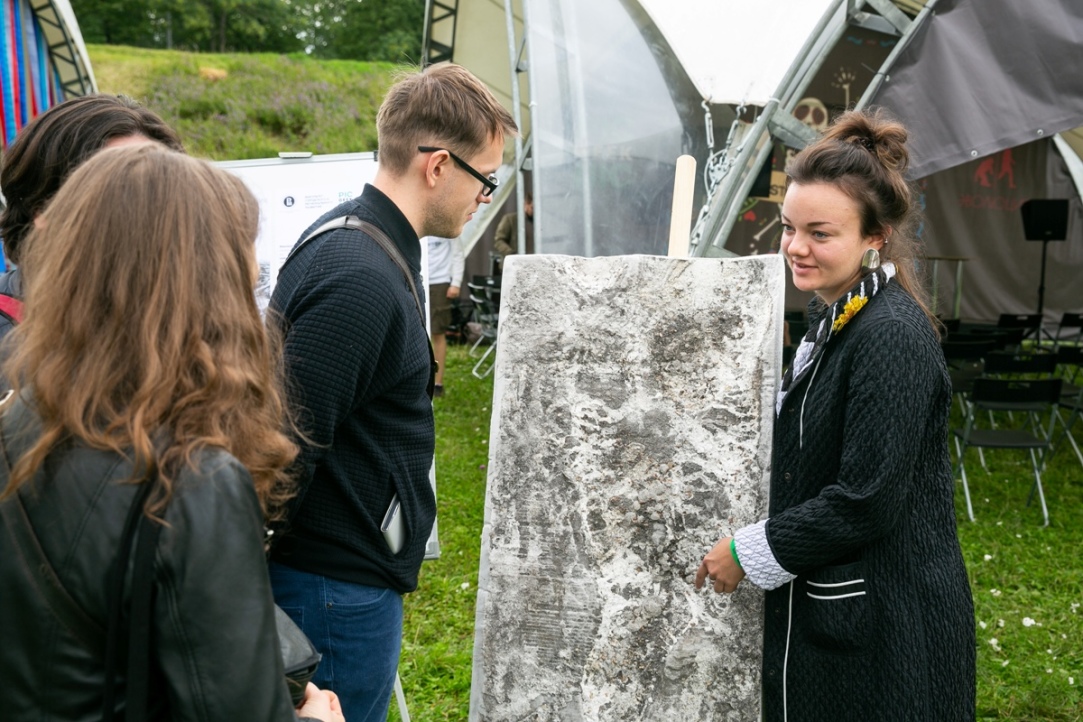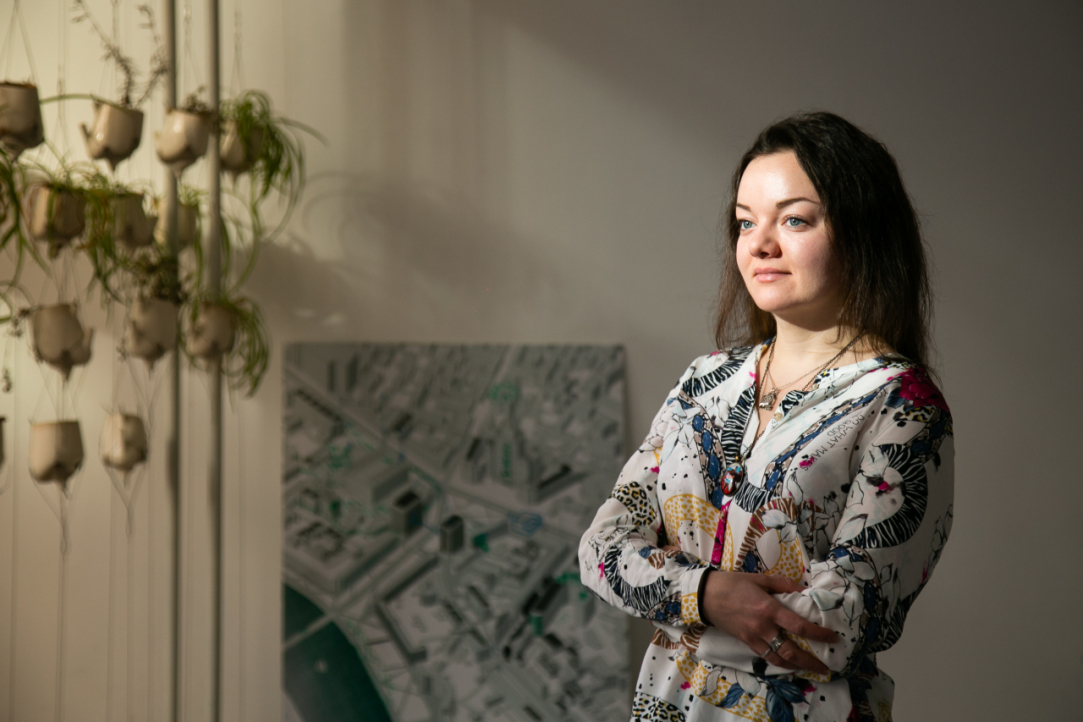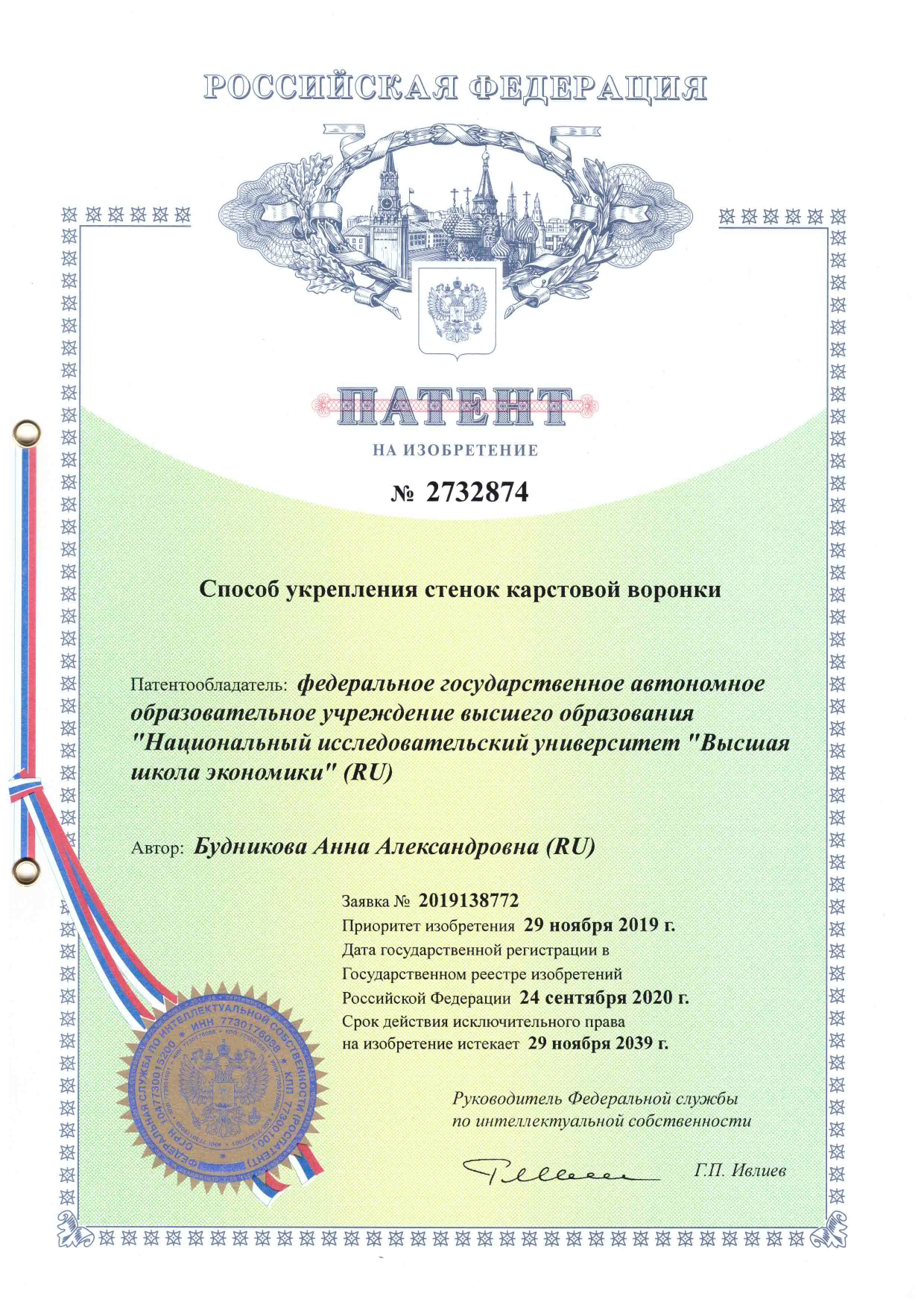Fungus and Architecture: HSE Alumna Receives a Patent for Her Invention

During her time at HSE University, alumna Anna Budnikova (MA, Prototyping Future Cities, 2019) developed an innovative project called Mycokarst under the supervision of leading Shukhov Lab expert Elena Mitrofanova. The project’s technology involves using fungal spores to repair karst sinkholes in urban environments. Now Budnikova’s innovation is patented.
Anna Budnikova figured out how to use the simple spores of Trichoderma reesei fungus to reinforce karst sinkholes. Karst sinkholes are an urgent problem, particularly in Kazan, where she earned a Bachelor’s degree in Architecture. For the capital of Tatarstan, the student developed her own Master’s degree project (Anna entered HSE University after winning a grant from the President of the Republic for education — ed.). In February last year, she commenced work on her project: she studied existing international research and conducted experiments.
‘Prototyping Future Cities’ is an international Master’s programme at HSE University. The programme focuses on five key areas: urban design, technology, information, governance, and culture. The curriculum includes both compulsory disciplines and research activities, international seminars and internships. The programme is designed to work with different elements of urban space — individual objects, buildings and the city as a whole.
In her experiments, Anna discovered that fungal spores strengthen karst sinkholes and stop them from further collapse. At the same time, the architecture industry is interested in working with these sinkholes as full-fledged architectural objects: they can be not just a ‘pit’, but may also be integrated into a complex system of caves (for example, such caves in China are now included on the UNESCO World Heritage List).
Anna Budnikova, Mater’s Programme ‘Prototyping Future Cities’ alumna

Imagine there is an area of weak ground or an existing sinkhole. Fungal spores are sprayed onto the soil surface (approximately 20 grams per square metre). Once exposed to moisture, they become activated and start to deposit calcium, a component of limestone. Because karst and limestone are similar in chemical composition, all cracks gradually self-repair and the karst is strengthened (the mycelium itself is used in parallel to create super-strong ‘mushroom’ bricks).
Prior to the experiment, it is essential to check the soil composition and humidity level as well as the environmental conditions. Usually, the prepared karst is coated with an additional layer of ash or dolomite flour before spraying it with the fungal spores. It is assumed that in the future this could be done by a drone or other robotic technology.
This technology looks simple, but it’s actually very nuanced. It’s about working with living systems. Ideally, this invention is a way to combat ‘non-programmable’ urban phenomena, which can be dealt with only by the simplest micro-organisms.
The work of the HSE University student was praised by the international community: in 2019 she won an award at the annual two-day Biodesign Challenge Summit in New York. And at the end of the year, she applied to Rospatent (Federal Service for Intellectual Property) to register the invention. ‘I went through the HSE University Patent Office, where I provided all the necessary materials and a description of the project, and a specialist processed the documents in accordance with the required standard,’ Anna explains. ‘Rospatent has two stages of examination. First there is a formal examination of the documents, which usually takes 2-3 months. Second, there is a verification process for the development itself, which takes 5 to 12 months (and together with corrections about 18 months)’.

Anna says that despite the pandemic, her application was processed quickly, and she was granted the patent in September this year.
I was granted a patent without a single amendment to the project. I’m glad I was able to create something indisputably new and relevant and then describe the technology in sufficient detail
So far, the technology Anna developed has not been introduced to the market; it was risky to do so without a patent, so she only discussed the possibility of implementing the project with a few companies and drew up a primary business plan. She also sees the potential for improving her idea.
‘I would like to work as a researcher at HSE University to further develop the project both theoretically and in practice,’ Anna says, when asked about her plans. ‘At this stage I would start my scientific publications in Elsevier (which are now at the re-submit stage). I would also like to pursue this project further in a PhD programme abroad. Indeed, despite the patent, interest in Mikokarst is considerably higher abroad. Finally, I have my own architectural studio – M-A SPACE — and I can promote the project in various competitions and think about alternative applications of the material and technology.’
Elena Mitrofanova

